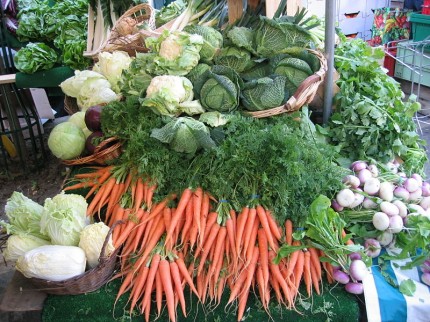A Q&A Lesson in Local Food Literacy: How do I help my students navigate a grocery store, including how to buy local and shop cost effectively?
Posted: April 10, 2018
Categories: Edible Education Network / Good Food Ideas for Kids / GoodFoodBites / Schools
 We’re at our 6th blog post now in the Local Food Literacy blog series!
We’re at our 6th blog post now in the Local Food Literacy blog series!
Most recently we looked at getting local food into our schools and on our cafeteria menus, but this time we’re going to focus on engaging students directly with the purchasing process…
Q: How do I help my students to navigate a grocery store, including how to buy local and how to shop cost effectively? It’s challenging to know what’s local by just reading labels. And the cost of local, fresh food can be very high. I find it really difficult to teach students how to access local food when it can be so costly to purchase.
Here are some ideas from our project team:
-
- Tour a grocery store. Make sure to highlight: shopping the perimeter, looking at the cost/unit (e.g. $ per 100 grams), bulk purchasing, origin labels.
- Collect flyers to use in class or look online if you can’t make it to a store.
- Make use of the What Toronto Eats workshop (FoodShare, for Gr. 9-12 students), which explores what people can access at different income levels. This resource includes tips for navigating a grocery store and touches on how to talk about local food and nutrition. http://foodshare.net/program/educator/
- Advocate about food issues in your local community including the cost of food: write letters, use social media, explore food policy councils.

- Explore alternative buying systems (e.g. co-ops; growing food as a class; Good Food Box; mobile markets).
↳Frederick Banting Alternate Site in Ottawa has shared with us how they enjoy regularly receiving a Good Food Box (a delivery of fresh, organic, in-season fruits and vegetables grown close to home), in addition to planting an organic garden on the school property every year.
↳ Paris District High School students also learn from visiting nearby farmers’ markets. - Grow your own food – this will help students understand the value of local food.
- Have students do an inventory of local food businesses. Prioritize these when sourcing food for school programs or catering.
- Promote the Foodland Ontario symbol in the classroom, and encourage students to look for it in their grocery stores. https://www.ontario.ca/foodland/page/finding-local
- Keep in mind that food education is full of contradictions and complexities.
Do you have other tips for educating students on buying their own local food? Share them with us on Twitter and let’s keep the local food literacy conversation going!
The above content comes from the Local Food Literacy in Schools FAQ Guide, developed by Sustain Ontario, Ecosource, FoodShare and Roots to Harvest.

